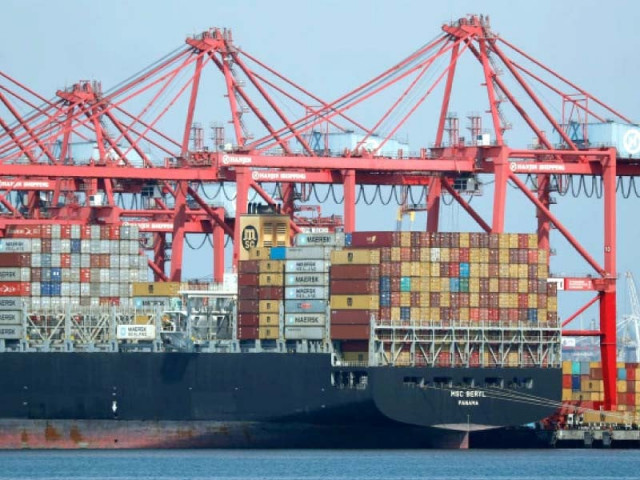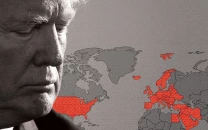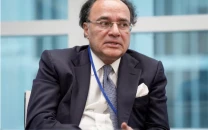Trade gap shrinks at the cost of economy
Current account deficit narrows down by 42% in Aug this year

Pakistan's current account deficit (CAD) -- the gap between country's higher foreign expenditure and low income -- narrowed down by 42% on a month-on-month basis to $703 million in the wake of meaningful rise in inflows and fall in outflows in August this year.
The notable cut in the current account deficit, however, was achieved at the cost of economic growth.
The forced cut in imports has started impacting the country's industrial output and causing the closure of their units.
Latest reports suggest a slowdown in export earnings as well.
The State Bank of Pakistan (SBP) reported that the current account deficit stood at $1.21 billion in the previous month of July 2022.
Cumulatively in the first two-month (July-August) of the current fiscal year 2023, the current account deficit dropped by 19% to $1.91 billion compared with $2.37 billion in the same period of the last year.
"The drop in deficit in the single month of August and cumulatively in the first two months is achieved "mainly due to increase in exports by $0.5 billion and contraction in imports by $0.2 billion [in two months]," the central bank wrote on its official Twitter handle.
The notable surge in export earnings of $533 million on a month-on-month basis to $2.81 billion in August this year was apparently seen on the back of bleak outlook for the US dollar against the local currency in the interbank market in the country.
It may be recalled that most of the Pakistani exporters did not ask their global buyers to make due payments to them in pervious couple of months e.g. June-July 2022. They had opted not to sell dollars in the interbank market, waiting for a maximum possible drop in the value of the rupee against the US dollar.
Later, they aggressively sold US dollars when the rupee resumed a partial recovery drive in August after having cumulatively lost 13.75% (or Rs29) in 10 consecutive working days to a record low closing at Rs239.94 on July 28, 2022.
Exporters usually wait for a suitable time to sell dollars, as they have a 90-day period to realise their export proceeds from their global buyers.
Secondly, the strong recovery of 8% in inflows of workers' remittances to $2.72 billion in August compared with July also supported the current account deficit to narrow down in the month.
Thirdly, the imports have reduced mainly because of a complete ban on non-essential and luxury items, while an aggressive slowdown in essential imports through administrative control also played a key role in cutting the current account deficit.
The notable cut in the current account deficit in August was higher than market exexpectation
Accordingly, this partially supported the rupee to stabilise at around current historical low levels, as the downturn in the domestic currency significantly slowed down on the 15th consecutive working day of the freefall.
The currency inched down by 0.03% (or Rs0.06) on a day-to-day basis to close at Rs239.71 against the US dollar in the interbank market on Thursday.
This is still Rs0.23 away from the all-time low closing of Rs239.94 hit on July 28, 2022.
AKD Securities CEO Farid Alam said the government's corrective measures to cool down the then overheated economy including controlling import and supporting export have helped it narrow down the current account deficit.
"The measure suggest the current account deficit would remain under control over the next three to four months," he added.
Alam said the government should strongly support import substitution industries to cut country's reliance on heavy imports. He was of the view that the strategy would not only keep the current account deficit under control, but would also save foreign exchange. “This will build up foreign reserves as well,” he added.
The recent fall in international crude oil price should also reduce country's import bill and current account deficit, as the country heavily relies on imported energy to meet the local demand.
"The benefit [of reduction in internal oil prices], however, may not reach the people due to the tight fiscal position of the government,” Alam noted.
He, however, criticised the government for allowing the US dollars fly out abroad in recent days. He also disapproved of the government showing leniency while dealing with commercial banks and currency dealers over the manipulation in the rupee-dollar parity.
"The stage is set to welcome back former finance minister Ishaq Dar in Pakistan. He knows how to deal with banks and currency dealers," he added.
The rupee has showed signs of stability at around current level below Rs240, as it has resisted time and again falling beyond the historical low level of Rs239.94 against the greenback in the past couple of days.
Earlier, experts had anticipated the rupee would settle at around the technical level of Rs240 considering it had significantly lost its value by 11.70% (or Rs25.11) in the past 15 successive working days to date.
Alam said the likely return of Dar, who is known for artificially controlling the rupee against the US dollar, might help the local currency to recover to Rs210-220.
“If floods had not made their way to impact the economy, the rupee would have been hovering around Rs200 these days,” he added.



















COMMENTS
Comments are moderated and generally will be posted if they are on-topic and not abusive.
For more information, please see our Comments FAQ